Fly fishing is a fishing technique that involves using a special fly rod, reel, and line to cast artificial lures that imitate insects called flies. These fly fishing flies can represent all sorts of food fish eat like ants, mayflies, caddisflies, minnows, frogs, and mice. The goal of fly fishing is to present the fly to the fish in a way that mimics the behavior of a natural insect or baitfish. Fly fishing is often associated with trout fishing, but it can be used to catch a variety of freshwater and saltwater species such as bass, salmon, bass, carp, tarpon, and bonefish.
Fly fishing is many things to many people. For some anglers, it’s a casual hobby. For other fishermen, it is a career within a multi-billion dollar industry. For many fly fishers, it is a lifelong passion for people of all ages. Fly fishing is an art, one that is constantly evolving and changing.
If you are first time fly fisherman or have never touched a fly rod before, then we are going to help demystify what is fly fishing. It can be intimidating to walk into a fly shop and ask questions. We are going to discuss the basic tenants of fly fishing and try to answer many of those questions.
Where Did Fly Fishing Originate From?
Necessity is the mother of invention. Like most sports, fly fishing has evolved over time. Primitive fly fishing can be traced over a thousand years to Eastern Europe.
Humans have caught fish since the beginning of recorded time. At some point, an enterprising individual, who, we’ll never know, discovered that by tying feathers to a fishing hook they could catch fish. The first recorded instance of fly fishing comes from a 2nd-century, 200 CE, text describing Macedonian fishermen using a primitive form of a fly to catch fish.
How the cultural exchange of fly fishing happened, is a mystery. However, we do know that at some point in the middle ages, the sport was transplanted to Great Britain in the 15th and 16th century. Like most things British, something simple was turned into a complex endeavor. This was achieved with improvements in fly fishing equipment.
Although early fly fishing gear is nothing like today’s fly rods and reels, we begin to see a close resemblance in mechanical form to the modern sport of fly fishing. Early anglers used fresh-cut green tree branches roughly two yards long as fly fishing rods. In addition, primitive fly lines made of horse hair were tied to the end of the tree branch.


In many ways, this is very similar to Tenkara fly fishing, the traditional Japanese fly fishing technique that doesn’t require a fly reel or traditional fly rod. As the sport progressed, it was transplanted across the Atlantic to the United States in the 18oo’s.
Fly fishing in England was a gentleman’s sport, only enjoyed by the ultra-wealthy. As fly fishing gear technology improved, a silk fly line and bamboo fly rod replaced the green tree branch and horse hair line.
In America, the bourgeois class had access to fly fishing. The sport became available to middle class people. Like most hunting and fishing are done in 19th century America, the purpose was to conquer and subdue mother nature. People fished to survive and eat, keeping all they caught and overfishing many rivers.
As the sport grew in popularity the demand for better fly fishing equipment evolved. Silk lines replaced horse hair fly lines. Longer lines were needed, and the revolutionary invention of the fly reel changed the sport. Silk fly lines, although better than horse hair lines, still required an enormous effort to keep them fishing well. They had to be repeatedly cleaned and dried after every use.
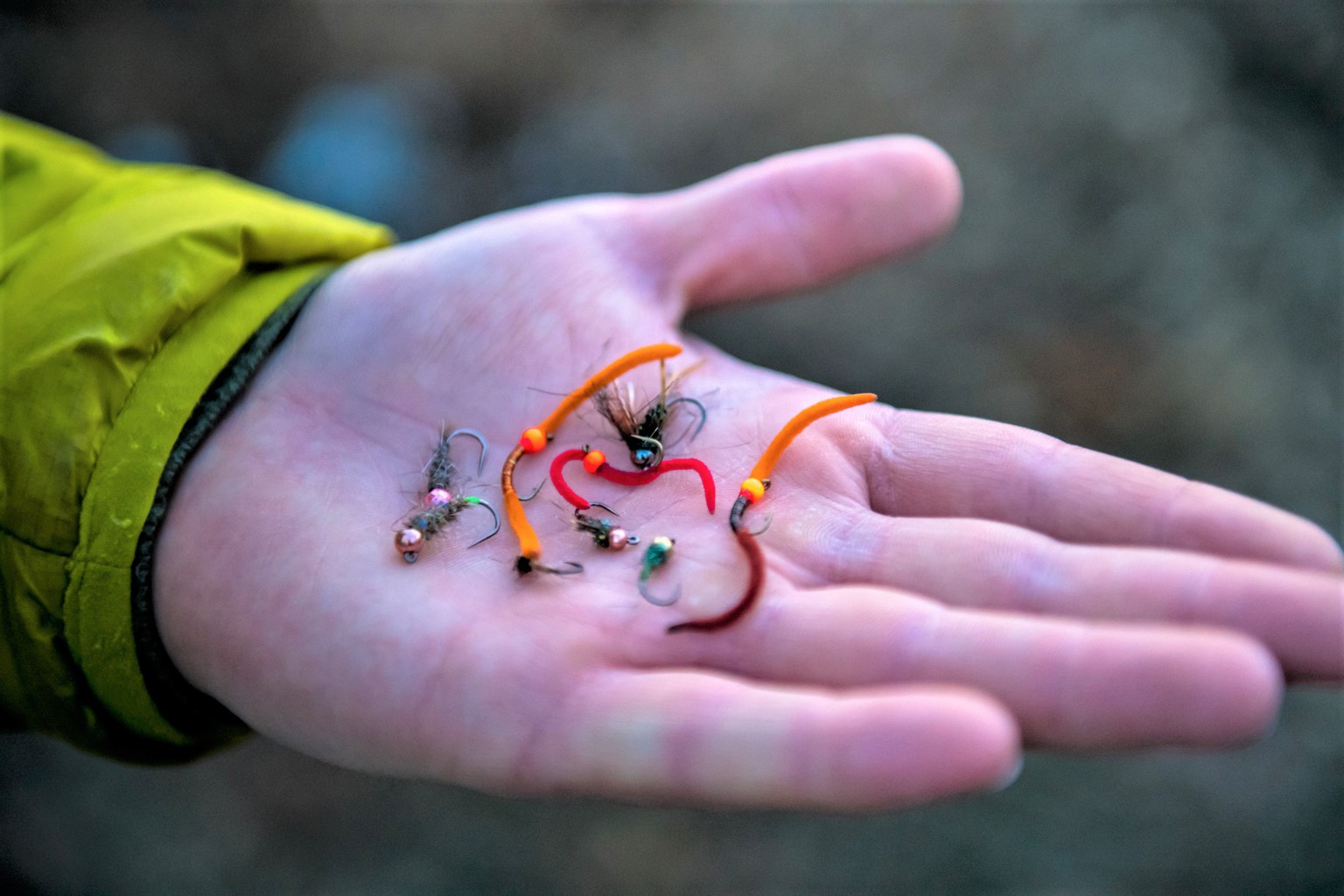

In addition, the evolution of fly design starts to accelerate. Flies originally tied onto bone, were beginning to be tied onto modern hooks. In addition, the advent of dry fly fishing became an important part of what makes fly fishing so unique. While top water baits in conventional fishing existed, tying artificial flies to reflect the various life stages of aquatic insects on the surface of the water was a new concept.
As fly fishing tackle technology has improved over time, fly anglers now have an endless array of state-of-the-art fly fishing rods, fly reels and fly fishing lines at their disposal. Thankfully, none of them need to be dried after fishing.
The mentality has changed too. No longer are fly fishermen and anglers trying to conquer nature, but the ethos of ‘leave no trace’ is a mantra that 21st century anglers practice proudly. Conservation, catch and release fishing methods, and leaving our natural environment better then we found is the modern angler’s mindset and have increased our fishing opportunities
What is the Difference Between Fly Fishing and Regular Fishing?


The gap between fly fishing vs regular fishing is pretty wide. With a regular fishing rod, we use plastic, wood, metal lures, or even live bait fishing techniques to catch fish. In addition, light lines made of clear monofilament are used to attach the lure. Traditional fishing techniques involve casting your bait or lure into the water. With live bait, fishermen can let the bait sit passively under a cork, merely hoping that fish finds the bait.
Fishing artificial lures, anglers can use both the rod tip and reel to impart motion into the lure. Actively reeling the lure back to the angler, lures wobble, vibrate, and have spinning or moving parts. These provoke fish to reactively strike the bait. Spin fishermen have an advantage over the fly angler because they cover large swaths of water. In addition, scented baits attract fish and make catching fish more easy.
How Is Fly Fishing Different?
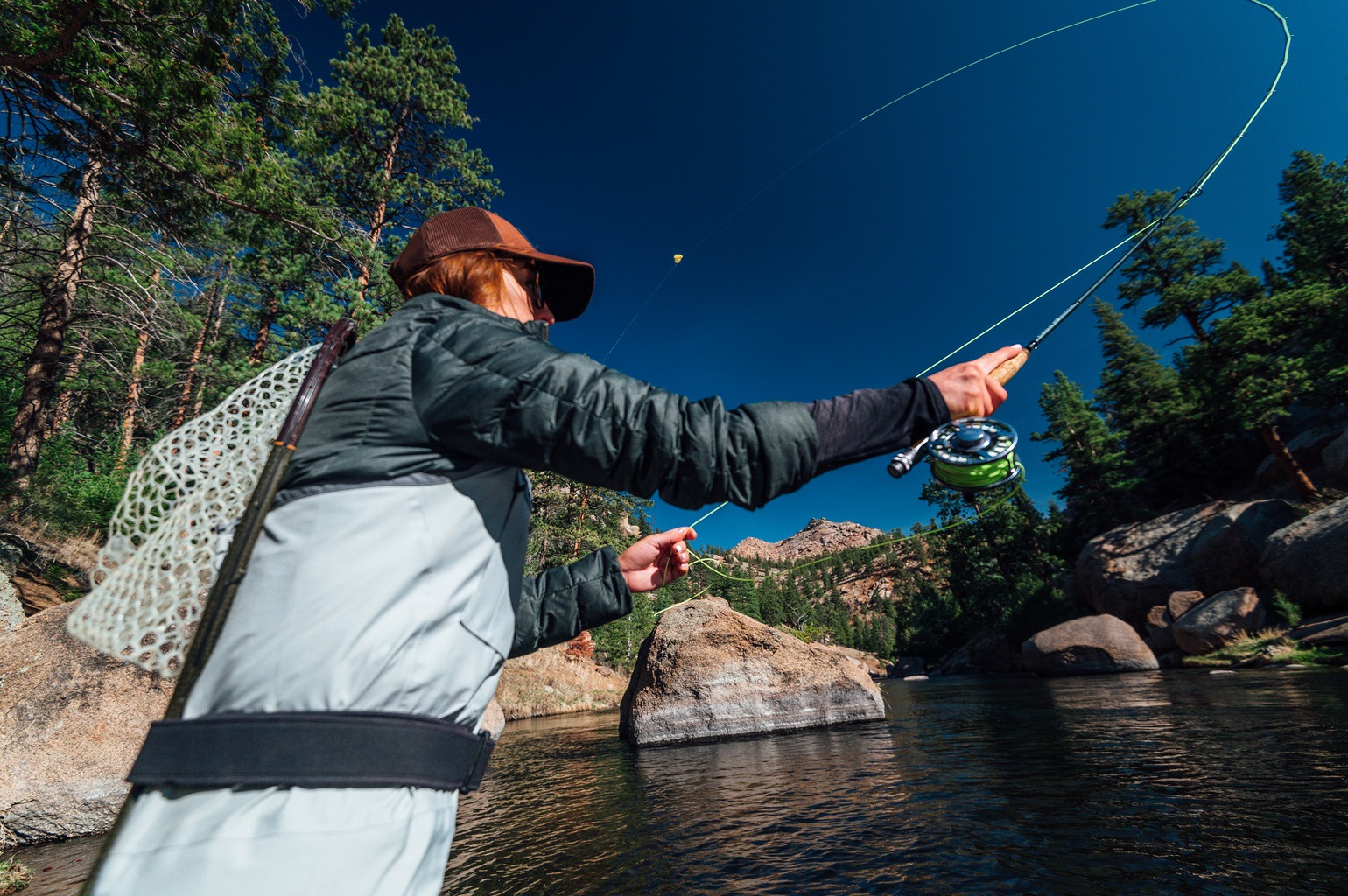

The goal of fly fishing is to imitate the natural insects in various life stages of growth in a river or lake system. There are millions of tiny insects that live in or below the substrate of the river. All of these insects have different life cycles. Throughout the year, they grow and change.
At certain points during the day, when the water temperatures reach an optimal temperature, insects naturally crawl out from under the rocks of the river and start to swim towards the surface of the river. As they emerge from underneath the rocks, they are swept into the river’s current and into a fish’s feeding lane. This presents fish with an opportunity to eat. The insects are all floating in the river at the same speed as the water current. Whether we are fishing wet flies below the surface of the water or dry flies on the surface of the water, our goal is to imitate the lifecycle of the hatching insects and catch a fish. This is called matching the hatch.
What Kind of Gear Do You Need for Fly Fishing?


For a beginner stepping into fly fishing for the first time, you are going to need a fly rod, fly reel, and a fly line. You will also need a leader, tippet, fly boxes, and of course a few flies. Fly fishing is a gear oriented sport, but you can find plenty of enjoyment in the basic fly fishing setup.
Fly rods are found in many lengths. For beginner fly fishermen, an excellent option is a 9ft 5 or 6-weight rod. Fly rods are classified by weight. They are built in weights from #2-#15. The smaller the number, the lighter the rod. A two weight rod is used for small trout and panfish. A size 15-weight rod is utilized to catch blue water species like marlin or sailfish.
Fly rods are made out of many different types of materials. They can be made with natural materials like bamboo. Bamboo fly rods were the first type of fly rods made in the 1800s that look similar to the modern rods that we use today.
Modern fly rods are made of space age material, like graphite or fiberglass, that bend and flex in optimal ways. There are fast action rods that have super stiff tips. These rods are made for making long precise casts, nymphing, or casting streamer flies.
Slow action rods have a softer tip, which means they bend or flex further down the body of the rod. These rods are primarily used in fly fishing for casting dry flies. The softer tip gives you less accuracy when casting, but allows a fly fisherman to present flies softly on the water. A delicate presentation is needed so as not to scare weary fish away.
The fly reel is arguably the least important part of a fly rod and reel setup. The fly reel is really just a glorified line holder. This is especially true if you are fishing with a 6-weight rod or smaller. Very rarely do anglers reel small bass or trout in. Using both hands and the pointer finger, we strip fish in. This means for a beginner fisherman a basic fly reel will do. Spend most of your money on a rod and a good fly fishing line.
Recommended Reading: The Complete Checklist for Fly Fishing Trout


Beginner fly fishermen should choose a fly line that is weight forward and floating. There are many different types of fly lines. A weight forward fly line is a solid all around choice for your first fly rod. You can nymph, dry fly fish and cast streamers with a general purpose weight forward line. Fly lines range in price from $30 to $130. The more expensive fly lines float better, last longer, and present a fly better. Choose to spend more money on your line and rod for a better fishing experience.
To complete your fly fishing setup, you need a monofilament leader. The leader is a clear tapered line that attaches to your plastic fly line. This is what we tie our fly onto. Leaders are generally found in 7.5 or 9 feet in length. They are sized with an “X” designation such as 1x, 2x, 3x, 4x, 5x, 6x, and 7x. The smaller the number X the Heavier the line, so 1X is equal to .01″ diameter and 13 lbs of test. The larger the number the lighter the line. A 6x tippet leader has a diameter of .004″ and 3 lbs.
It is necessary to match our flies with the proper size leader. If we are fishing small flies then we need a light leader to properly present flies, and to be able to attach them to line.
What is the Difference Between Casting a Spin Rod vs a Fly Rod

How to Cast a Spin Rod
The casting technique for spin rods requires using the weight of an artificial lure to load or bend the rod tip. This is accomplished with a heavy lure. When the angler moves the rod back behind them to cast an artificial lure, the weight of that lure bends the rod tip.
The energy stored in the rod is transferred forward on the forward cast. The power from the rod projects the lure to the target and pulls the line with it. The physics of a conventional cast is similar to a pole vaulter being projected over the bar in a track meet. The energy created by the weight of the pole vaulter stored in a pole vault is used to project the athlete over the bar.
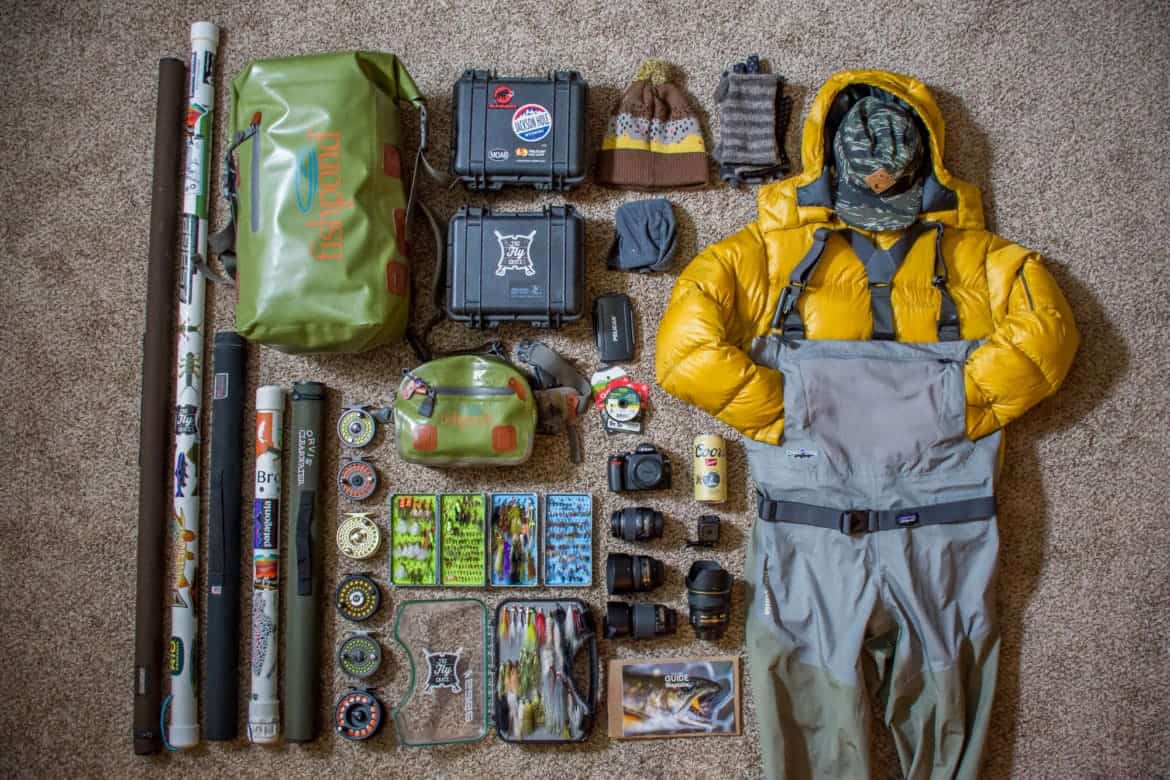
How to Cast a Fly Rod
Fly fishermen using a fly rod to execute proper casting techniques, lack the heavy lure that is used to load or bend the rod in conventional fishing. Remember, fly fishermen are using tiny flies that weigh almost nothing. In exchange for a heavily weighted lure loading or bending the rod, fly fishermen have a weighted plastic fly line.
The fly line is tapered. That means most of the line is a rather small diameter, as it gets closer to the end of the fly line, the fly line becomes thicker and heavier. The purpose of this taper is to help create a weight that will bend or load the rod as the angler whisks the rod tip back and then forward. The energy stored in the rod is used to project the flies toward the target.
There are many types of fly cast for different fly fishing scenarios. The most important fly cast is your standard over head cast. This is the most commonly used and recognizable fly cast.
There are three parts to a overhead cast. First, the back cast, picking the line up off the water and throwing it behind the angler. Second, a pause, letting the fly line unwind behind you in the air. Third a forward cast, we present the fly to the target. The first and third parts of the cast are identical in mechanics except that they are being done in opposite directions.
As we mentioned before, we have to use the weight of the fly fishing line to load or bend the rod. The energy in the rod projects the fly fishing line, leader, and flies. Loading the rod requires a back cast and forward cast that starts slow and then speeds up and stops. There is no follow through on a fly cast. An abrupt stop at the angler’s ear will launch the flies forward and release the energy that is stored in the rod.
Where Can You Go Fly Fishing?

Fly fishing techniques can be used to catch a wide variety of fish species. Fly fishing is practiced in diverse locations around the world. Freshwater fishing for rainbow trout, brown trout, cutthroat trout, and brook trout is probably the most recognizable species that fly fishermen target. That being said, there are an endless array of fresh water fishing species that are fun to catch fly fishing.
Smallmouth bass, large mouth bass, pike, striped bass, carp, panfish, and even alligator gar are just a few of the freshwater species that anglers can enjoy. This means that no matter where you live, you probably have the opportunity to try fly fishing. When targeting species like bass or pike, fly anglers use flies that imitate bait fish or small fish.
If you live in coastal areas then you are in an excellent area to try saltwater fly fishing. Saltwater fly fishing requires larger fly rods and bigger flies. Fish species that live inshore and off shore can be targeted with an artificial fly. Saltwater flies imitate small baitfish like crabs, shrimp and even eel fly patterns, which are effective in taking various saltwater species.
The list of saltwater species that can be targeted with a fly is endless. fly fishermen can catch a redfish in the marshes of Louisiana, or a sailfish in the blue waters of Guatemala. No matter where you live in the world, catching fish on an artificial fly is a realistic possibility. Chances are there is a local fly shop near you, which can point in the direction of your local waters.
What is The Trick to Fly Fishing?

Fly Presentation – A Drag Free Drift
The trick to fly fishing techniques is to present your fly in a manner that is consistent with how the natural food is behaving in the water. This is called a fly presentation. In trout fishing, for example, we use imitative flies that reflect the natural insect drifting in the water during a particular phase of that insect’s life cycle.
For example, when insects crawl out from underneath the rocks at the bottom of the river, they drift naturally in the current. Our flies must do the same. The slightest amount of drag or pull on the fly will make our fly look unnatural. While you still might catch a fish, we will not catch as many fish. Fish recognize unnatural drag, and are less likely to eat a fly dragging through the water.
Recommended Reading: Effective Dry Fly Fishing For Rising Trout
Presenting Flies and Matching the Hatch
Matching the hatch, or imitating the correct phase of the insect’s lifecycle is also an important part of the fly fishing presentation. Insects go through several lifecycle phases before they become adult insects. Each insect’s life cycle is different depending on which species you are observing. Don’t be overwhelmed with entomological names and Latin phrases, what is most important is matching the size, shape, and color of insects that are present on or in the water.
Generally speaking, insects live underneath rocks, attach themselves to rocks, or burrow into the bottom of the stream. As water temperatures begin to warm, insects crawl out from underneath the rocks and begin to either crawl to the shore or swim to the surface of the river. This is when you want to fish nymph flies, or flies underneath the surface of the river.
Once they make it to the surface of the river, they crawl through the surface film of water and float on the surface of the water’s surface. They must dry their newly formed wings before flight. Once dry, they fly to stream side bushes in order to mate and start the lifecycle all over again.
Recommended Reading: How Do You Match Flies to the Hatch?

As fly fishermen, we have to observe what is happening around us. Are there adult insects on the surface of the river? Are fish actively rising to the surface and eating bugs? If they are, then we should cast dry flies, flies that float, because this is an indication that fish are actively eating adult insects. This is our best opportunity to catch fish.
If there are not any fish rising to the surface, and there are no bugs on the water, then it might not be a good idea to cast dries. Fish might still be feeding, but most likely they are eating insects under the surface of the river. This means that we should nymph fish or fish wet flies.
Is Fly Fishing Better Than Regular Fishing?
Which is better? Comparing fly fishing vs conventional fishing is a tough question. One that will stir much debate. There are advantages to using both conventional fishing gear and fly fishing techniques to catch fish.
The Advantages of Conventional Fishing
The main advantage to fishing regular fishing gear is that the rod, reel, and fishing line allows anglers to cast further and quicker. This means that you can cover more water fishing with a regular rod and reel. As a result, you are presenting an artificial lure to more fish. In theory, you should catch more fish. Using artificial scents is also viewed as acceptable. This does make a huge difference when fishing for picky fish that see lots of lures or flies.
In addition, a regular fishing line is much easier to handle than a fly line, so if you have little kids the barrier to entry is much lower. This is an advantage if your goal is to get your kids into fishing with minimal frustration. Starting as a spin fisherman is a great way to pique a child’s interest in further fishing pursuits.
The Advantages of Fly Fishing
The advantage to fly fishing is that it is a deeper dive into all aspects of fishing. While the fly fishing learning curve is greater, it is a lifelong sport that helps anglers understand the nuances of their natural environment and fishing. Many of the same traditional fishing methods that make fishing fun translate over into fly fishing. Traditional fishing is merely a starting point.
Fly casting is more technical. Reading water and understanding fish behavior are important in both types of fishing. However, in fly fishing, you focus on the minutia of environmental factors in even greater detail. We understand the relationship between trout and aquatic insects. This gives you the advantage of presenting tiny flies to selective fish and translates into a greater understanding of fish behavior. These skills carry over to all types of fishing and even hunting. As in hunting, stealth and approaching fish is key to being a successful angler.
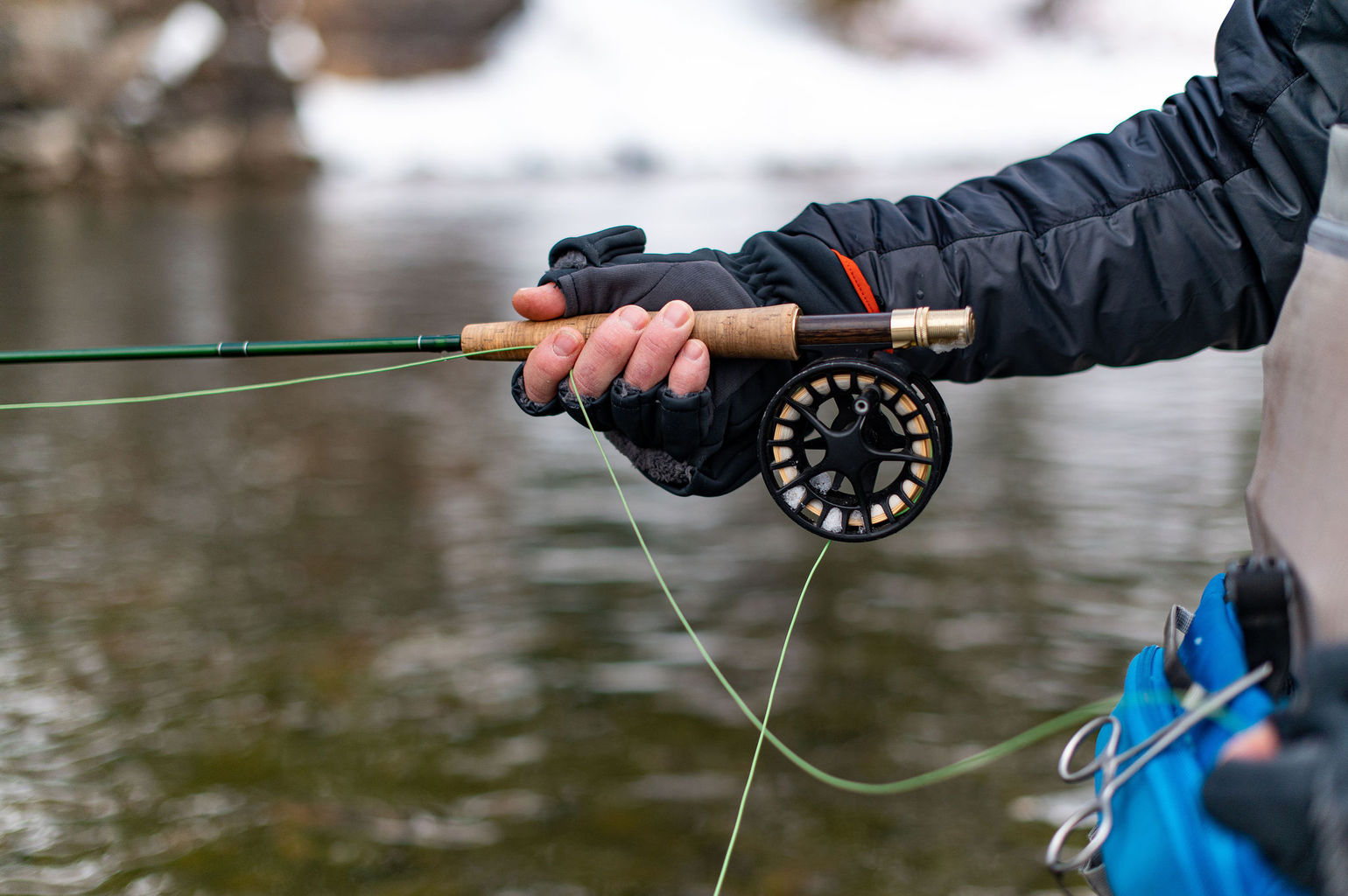
Why Do Fly Fishermen Not Keep Fish?
Catch and release is an important aspect of fly fishing. Fly fishermen choose not to keep fish because it helps maintain a healthy population and gives other anglers the chance to catch that same fish. While many conventional anglers release fish, it is safe to say that the catch-and-release movement originated with fly fishermen. The ethos of catch and release can be traced back to the 1930’s when fly fishermen and conservationists in New York recognized the intrinsic value that game fish bring to the ecosystem and economy.
This is especially true when it comes to fly fishing for trout. Rainbow trout, and all cold water species for that matter, are very sensitive. Salmon, trout, and steelhead are known as anadromous fish species, which need a steady flow of cold clean water to survive.
The odds are already stacked against trout from the moment they are conceived. Of the hundreds of eggs that are laid, only a few will survive to become adult trout or salmon. Nature is cruel and merciless.
When eggs are laid in a redd or spawning bed, many are washed from the nest. Many that are not washed from the nest are eaten by other fish. The eggs that are fertilized and hatch, spend the first part of their lives as alevin and fry, really small fish. They make great meals for other larger fish. If they are fortunate to make it to the juvenile trout stage, they can still be eaten by other larger fish, but are also the perfect size for birds of prey. By the time you catch a 15″ trout that hatched naturally in the wild, it beat incredible odds to become a mature trout. In the guide business, when clients use to ask if they can keep fish, a common question we would ask back is, “Would you kill your business partner?” Rebuilding fisheries is a long a difficult process.
Both fresh and saltwater fisheries that were once thought to be inexhaustible have collapsed due to over fishing. Catch and release has become a standard practice across all means of sport fishing. Thankfully we can leave our fisheries better than we found them.

Do You Catch More Fish Fly Fishing?
In many scenarios, yes, you do catch more fish while fly fishing. But, the number of fish you catch on a day of fishing depends on many factors. The ability to cast your fishing line and lure long distances and cover lots of water means that you will increase your chances of catching more fish than with a fly rod. This can be particularly true when fishing in saltwater or lakes.
That being said, there are many times, particularly on spring creeks, heavily pressured bodies of water, and with very selective fish the more stealthy approach of fly fishing gives the fly angler an advantage. Not only is the presentation more subtle, but the ability to tie your own flies and manipulate both natural and synthetic materials to match the subtle nuances of hatches also gives fly anglers an added advantage.
Is Fly Fishing Harder than Normal Fishing?
As a general rule of thumb, there is a larger learning curve with fly fishing. A direct relationship exists between the number of fish you catch and your experience level with a fly rod and fly reel. Casting further, presenting drag free flies, and reading water all increase your chances an abilities to catch fish.
Some anglers might find that the differences between fly fishing vs conventional fishing are difficult to pick up at first. However, most first time beginners that have experience with other sports like tennis, golf, or lacrosse will find that similar principals of physics apply to fly fishing.
The most important thing to remember is that you have to just try it. Fly rods are forgiving. With some basic understanding of casting and presenting flies, most anglers will find that it’s easy to get started to fly fishing for perch and other small panfish. This is an excellent way to be introduced to the sport.
Can You Use Flies for Regular Fishing?
Yes, it is possible to use wet flies, nymphs, and even dry flies with spin rods. Using a casting bubble that attaches to your regular fishing line, the weight of a casting bubble allows you to cast light lines further and present flies in an appropriate matter.
Casting bubbles are adjustable and can be filled with water so that a fisherman can adjust the desired weight to cast line further for spin rods. If you have kids or are new to fly fishing, this is an excellent way to wade into the sport without spending a ton of money. All you have to do is buy a few flies, a casting bubble, and go fishing.
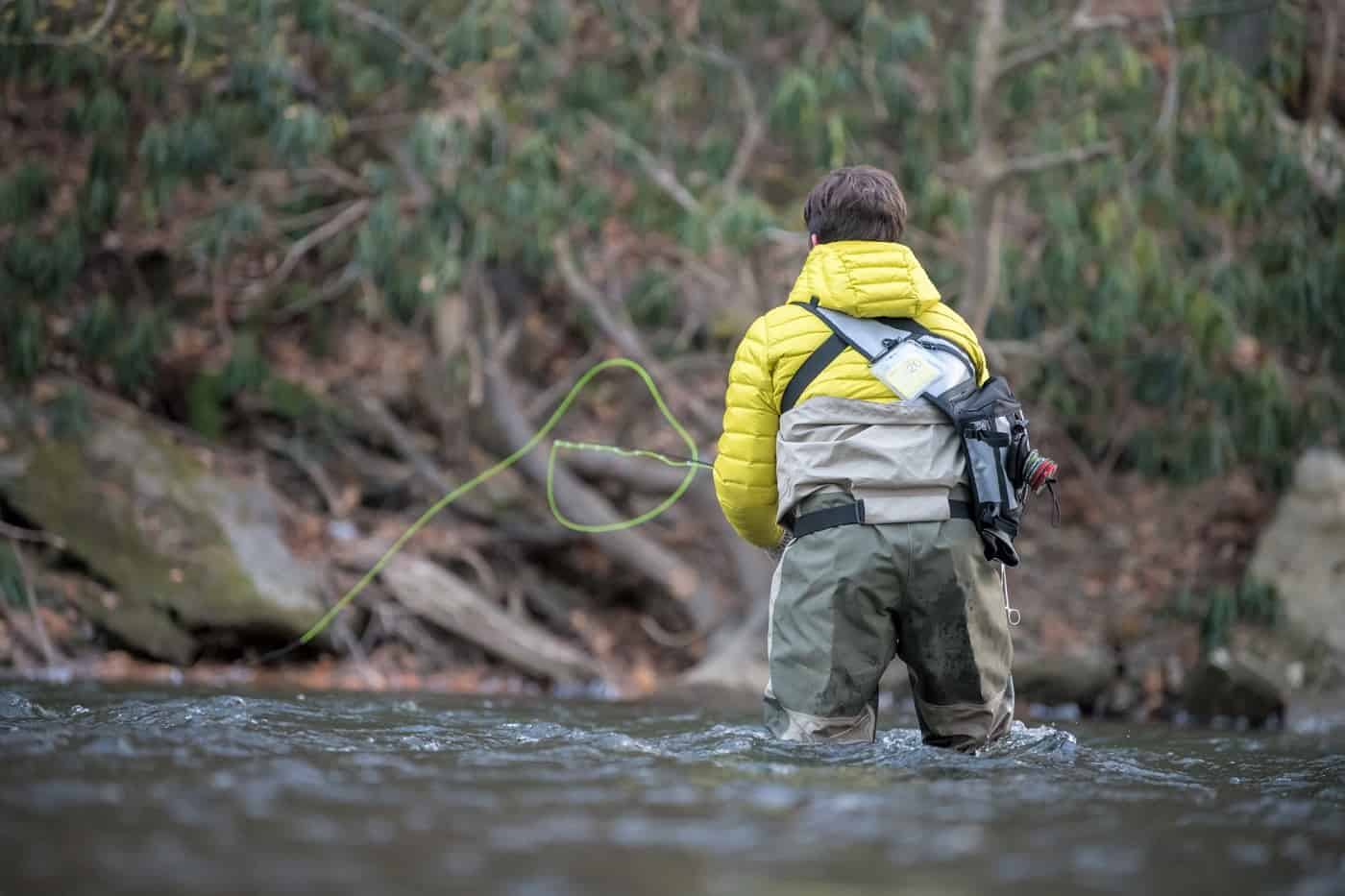
How to Choose Flies for Fly Fishing
There are a million different individual fly patterns that an angler can choose from. In addition, there are also several different categories of flies as well. Flies are sized according to even numbers. The larger the number, the larger the hook the fly is tied on. The smaller the number, the smaller the hook and fly is. Typical fly sizes range from #4 to #22. Number 4 size flies can imitate larger insects like salmon flies or grasshoppers. A size #22 would represent small midge patterns. For the beginner fly fishermen it is wise to choose fly patterns that work in a wide variety of places. These fly patterns are typically referred to as impressionistic flies.
Dry Flies
Dry flies are the flies that the average person is familiar with. These are classic fly patterns that float on top of the water. There are many different styles of dries. They are tied to represent the adult versions of mayflies, caddis flies, terrestrials, like ants beetles, or grasshoppers. These flies are best for fly fishing when there are insects on the surface of the water and fish are actively eating them.

Parachute Adams (#12 – #20) – The parachute adams is a classic dry fly pattern. It covers a multitude of mayfly species. This is especially true if you use permanent markers to change the color of the fly to olive, black, or even brown.

Elk Hair Caddis (#10 – #18) – The elk hair caddis is the best all around dry fly in my humble opinion. It covers mayflies, caddis, and small stoneflies. Caddis are much more abundant than mayflies, so it is wise to have plenty of these in your fly boxes.

Stimulator (#10 – #18) – The stimulator is similar to an elk hair caddis, but they are super buoyant. They represent multiple terrestrial insects and larger bugs. These can be fished in many different fly fishing situations. You can even drop a small nymph off the back of the fly.
Nymphs
These flies are fished under the surface of the water. They are tied to imitate the emerging and nymph stages of insects. Often these fly patterns are tied with weight or bead head. Weighted nymphs are effective at presenting flies deeper in the water column. Insects that are swept free from rocks, detritus, or grass beds tumble in the river current. Weighted flies help present the fly to the fish at the correct depth.
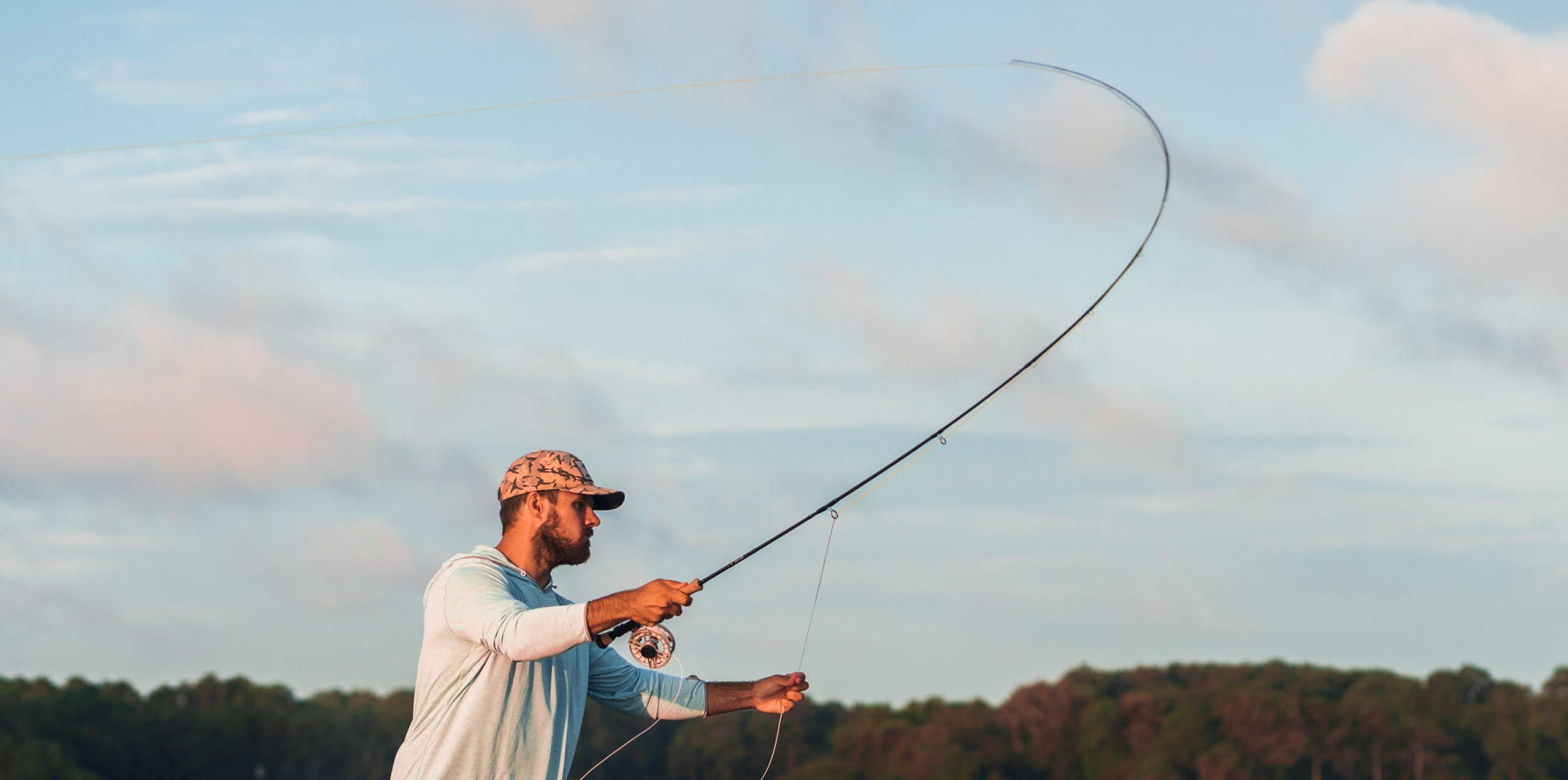

San Juan Worm or Squirmy Wormy – Worm patterns are excellent for when water is off color or there is a sudden change in the water levels. When the water rises, banks erode and worms are flushed into the river system. Fish usually do not pass up a high calorie opportunity like a worm.
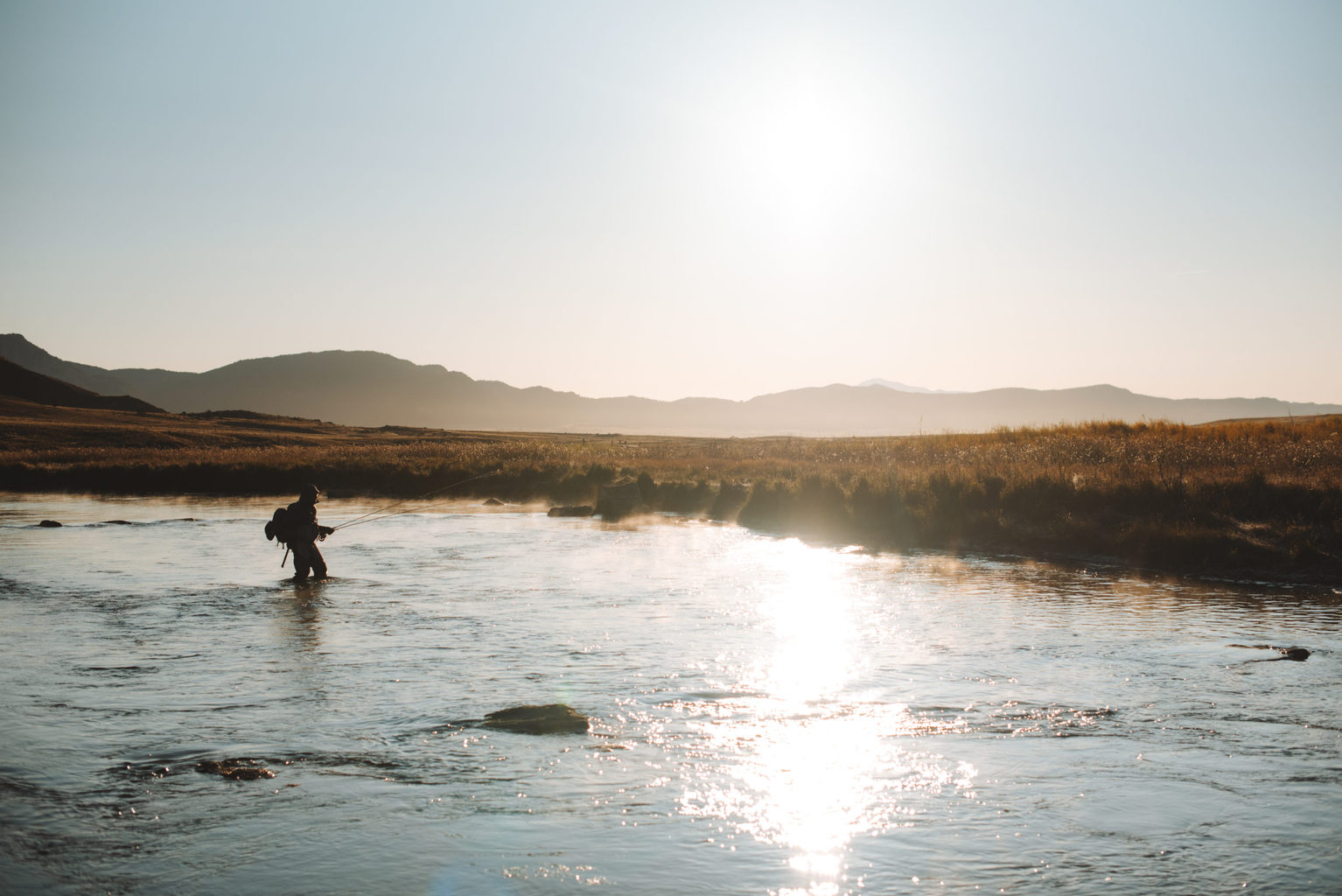
Jiggy Tungsten CDC Flashback Pheasant Tail (Sizes #18 – #14) – The pheasant tail is a classic nymph pattern that works in waters all around the world. It represents various species of mayfly. In addition, this heavily weighted tungsten jig hook and the addition of CDC make this fly extremely effective. CDC is a webby material that comes from duck feathers. When CDC is submerged it moves in a life like manner and makes cdc patterns very attractive flies.

Hare Ears Bead Head (Sizes #18 – #14) – The hares ear fly is a classic fly that represents both mayflies and caddis flies. It’s shaggy appearance looks buggy. Under water it could be a variety of insects covering mayflies, caddis flies, and even small stone flies.
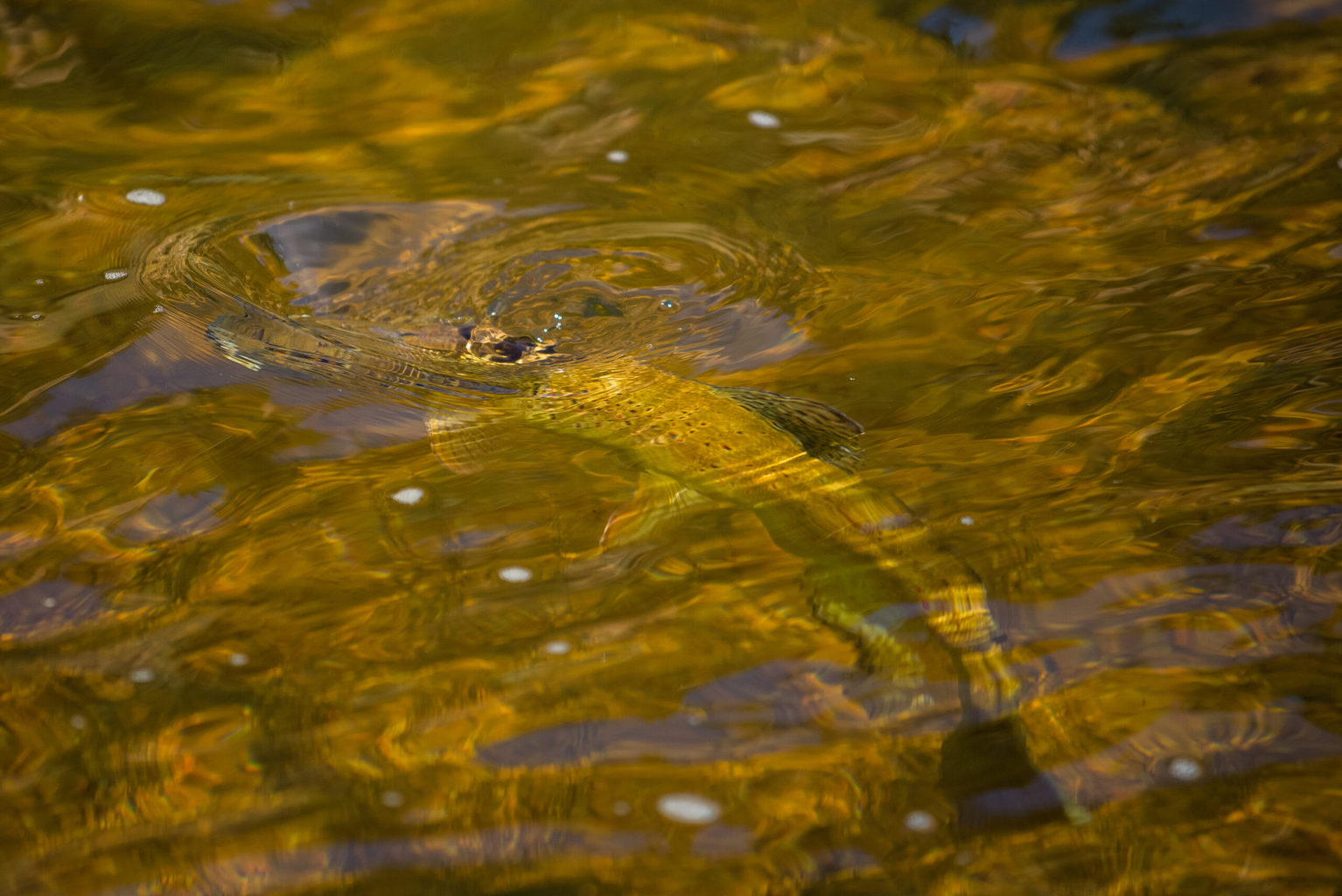
BH Prince Nymph (Sizes #12 – #18) – No body really knows what a prince nymph imitates, but fish seem to love them. The irredescent peacock herl has fish attracting qualities.
Streamers
Streamers are flies that imitate small baitfish, crawfish, and even mice. These flies are tied both weighted and un-weighted. Streamers are typically fished in an active manner. They are casted to banks, swung through the current, or stripped back to the angler. These are used to target big predatory fish in both fresh and saltwater.

Cone Head Wooly Bugger – The wooly bugger is a classic pattern that works in both lakes and rivers. It catches bass as well as trout. The heavily weighted cone head gets the fly deep.
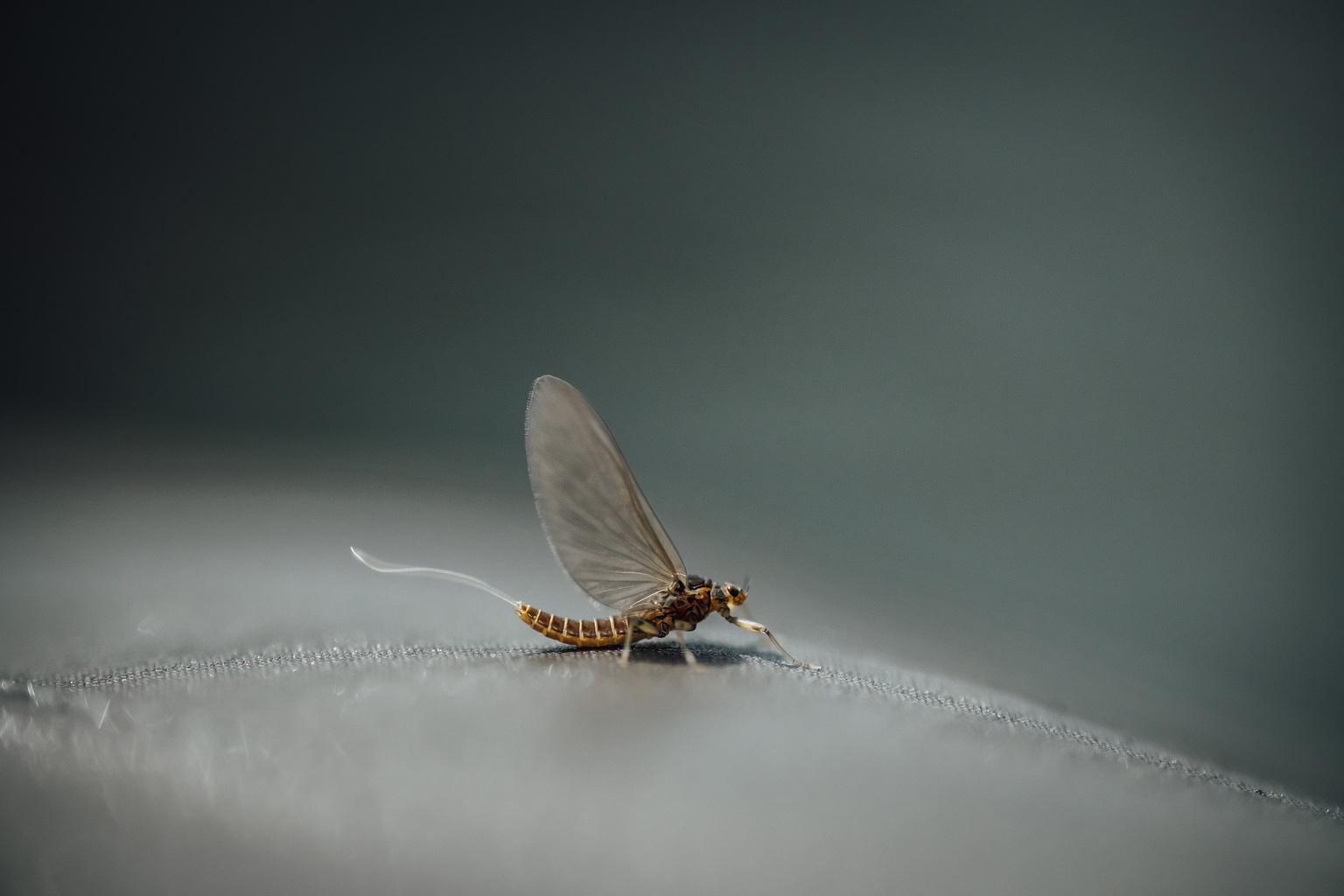
Meat Whistle – The meat whistle is a heavily weighted cone head fly that is tied on a jig hook. Sporting large amounts of rabbit hair, this fly produces tons of life like movement in the water. The jig hook allows the hook to ride upside down eliminating snags.

Zonker Minnow – The zonker minnow is a versatile pattern. This fly can be nymphed as well as fished like a standard streamer. It covers many different types of baitfish, so it can be utilized in many different fishing situations.











































